Inspiring Germany
Monasteries as a place of strength: find peace behind their ancient walls
Daily meditation, yoga or mindfulness training: Germany’s many monasteries invite you to spend some time there. These are the places where your soul can find some rest, away from the hustle and bustle of everyday life.
Take a break at a Baroque monastery
Roggenburg Abbey, Bavaria
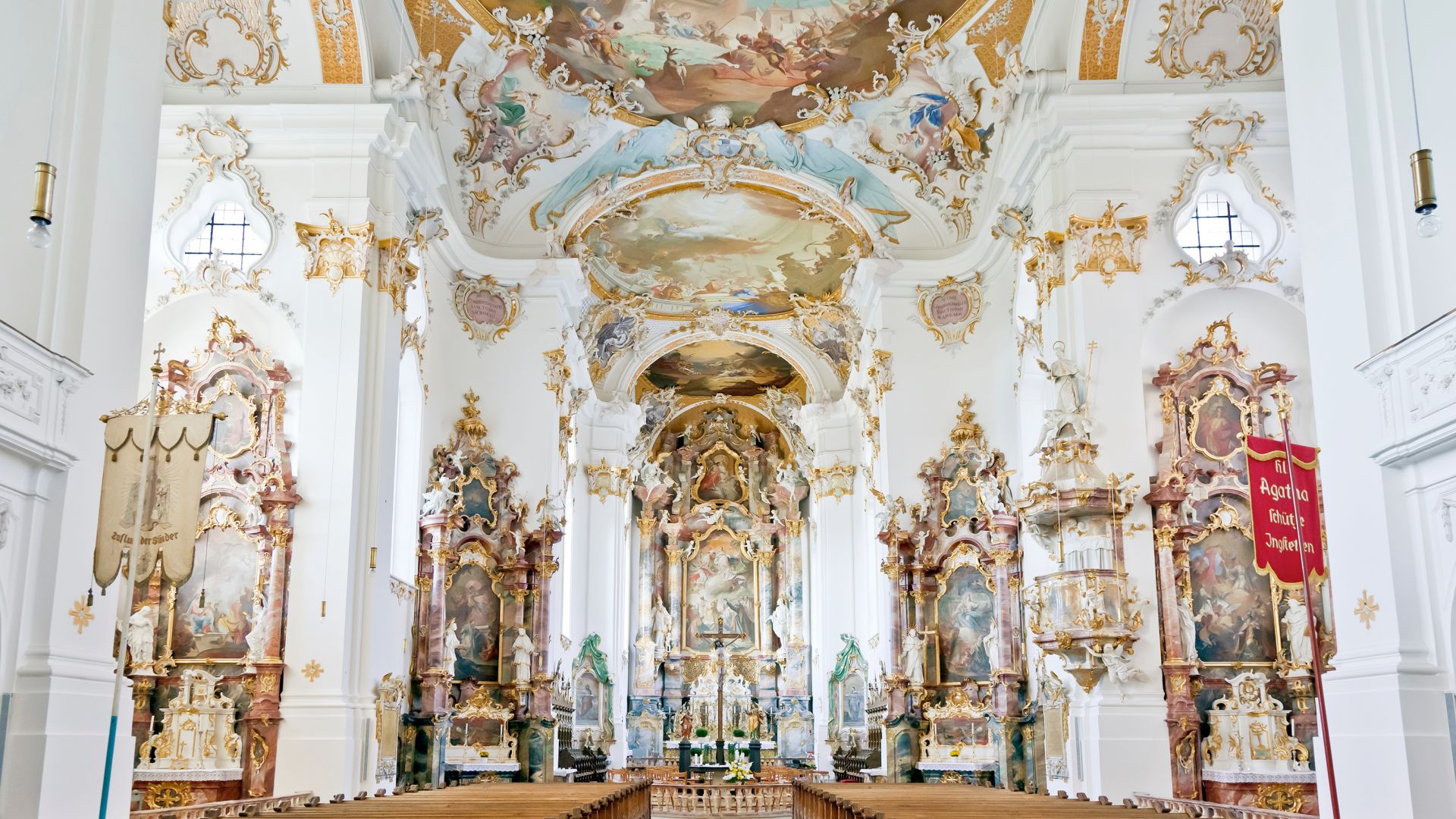 Roggenburg: Interior view of Roggenburg Monastery
©Adobe Stock (magann)
Roggenburg: Interior view of Roggenburg Monastery
©Adobe Stock (magann)
The Roggenburg Abbey, south east of Ulm in Bavaria, dates back almost 900 years. Still today, the Canons Regular of Prémontré fill this impressive baroque abbey complex with life, and invite guests to take a look behind the monastery walls. Visitors can admire the abbey church, with its two 70-metre-high towers, its museum filled with art treasures from the Baroque period, and the monastery garden with its ivy maze. Those seeking spiritual healing are invited to the abbey's special “retreat days”. Individual guests and groups can take a pause from everyday life, and take time to reflect undisturbed perhaps on alternative ways of life, or on questions of faith. There are also numerous pilgrimages and pilgrimage routes around Roggenburg Abbey. In addition to the Roggenburg abbey church, the Wannenkapelle and the Church of the Nativity of the Virgin Mary (Kirche Mariä Geburt) are two especially popular destinations. Pilgrims are invited to stay overnight at the Roggenburg Abbey education centre.
Benedictine monks open their doors
Maria Laach Abbey, Rhineland-Palatinate
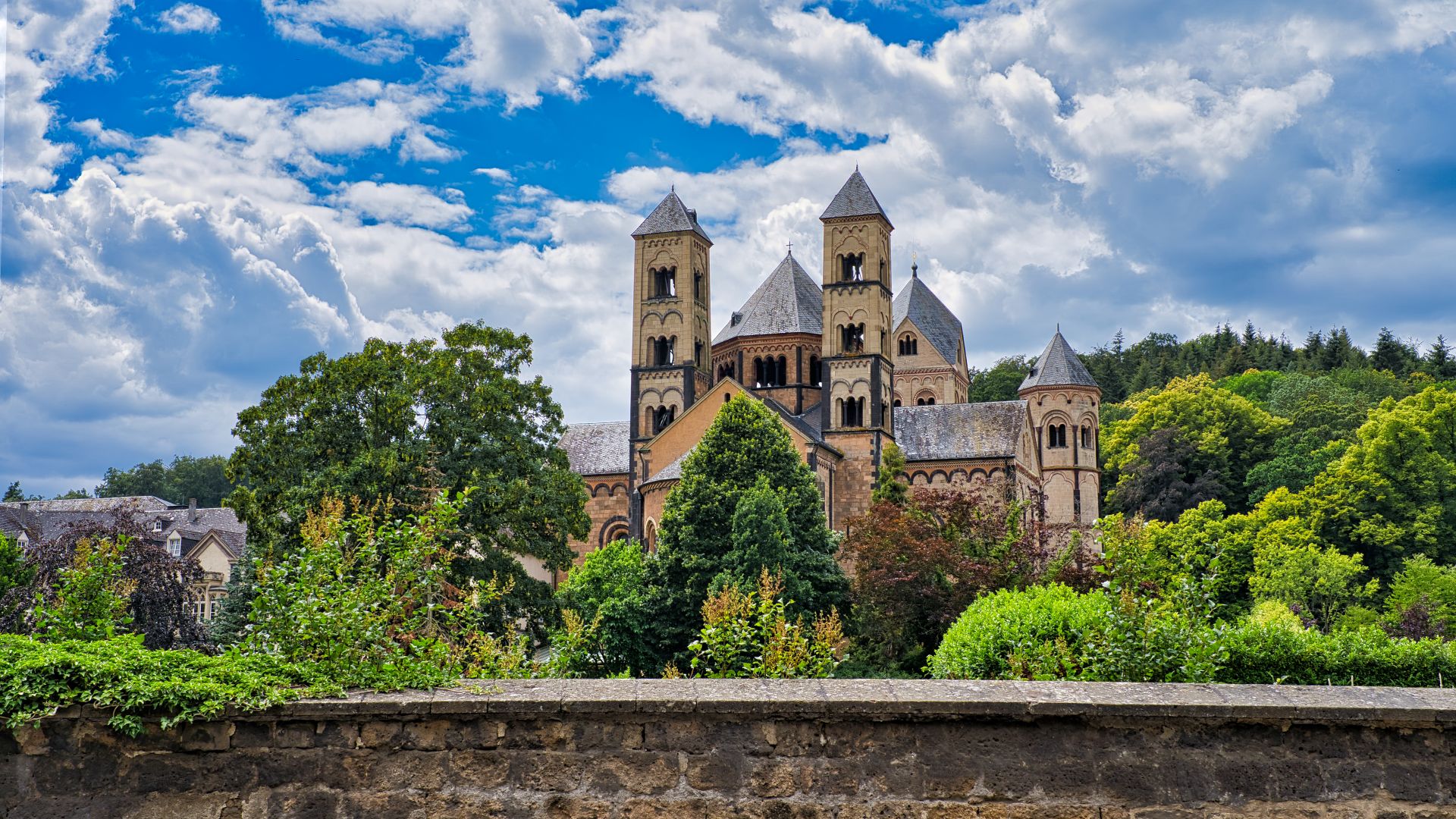 Glees: Benedictine Abbey Maria Laach
©GettyImages (Ventura Carmona)
Glees: Benedictine Abbey Maria Laach
©GettyImages (Ventura Carmona)
At the Benedictine Monastery of Maria Laach hospitality is a priority, in keeping with the Rules laid down by the ancient founder of the holy order, Saint Benedict of Nursia. The monks open their doors to all those who wish to give their souls time to return to themselves in the seclusion of the monastery. Visitors to the monastery stay in the St. Gilbert guest wing, where they share mealtimes together with other guests. The monks invite them to the celebration of the Christian liturgy, spiritual activities and conversations on living fullness of life. Guests can also recharge themselves in nature. This medieval monastery complex is idyllically located on the shores of Lake Laach, nestled in amongst the impressive volcanic landscape of the Eifel, with its dense forests, unspoilt valleys and dormant volcanic peaks. Those exploring the St. James pilgrimage route (the German part of the Camino de Santiago) can also enjoy this charming landscape as they pass by the Maria Laach Abbey on the Eifel-Camino or the Matthias pilgrimage routes.
Fasting and reflection
St. Marienthal Abbey, Saxony
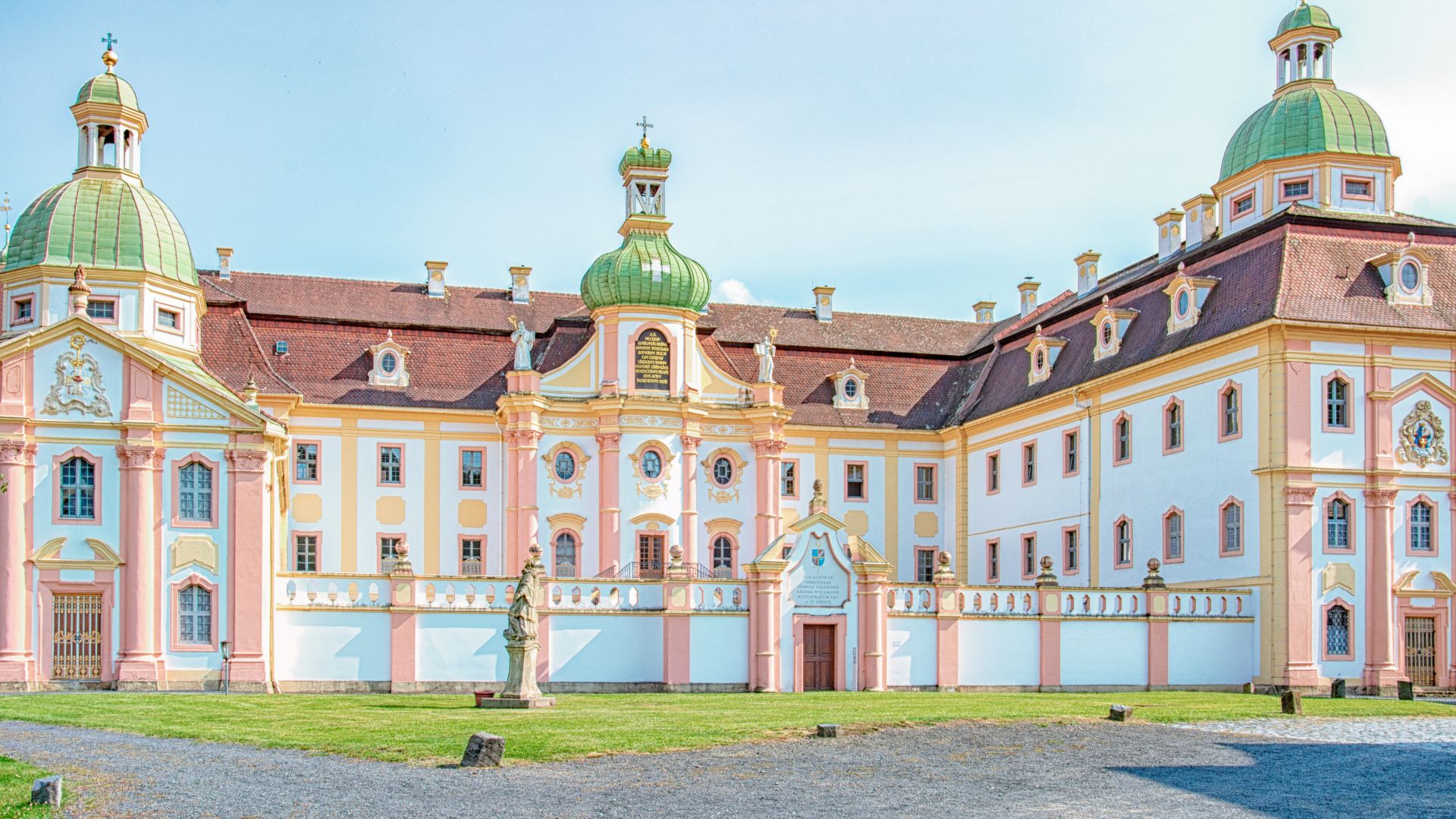 Ostritz: St. Marienthal Monastery
©Adobe Stock (Johann Pavelka)
Ostritz: St. Marienthal Monastery
©Adobe Stock (Johann Pavelka)
Founded in 1234, the St. Marienthal Abbeyin the Saxon part of Upper Lusatia is the oldest active Cistercian monastery in Germany. The nuns welcome anyone interested in monastic hospitality - those on a brief stopover and those enjoying longer monastic holidays. In addition to the Buchinger fast and basic fasting, they also offer courses in reflection, creativity, spirituality and singing, as well as the chance to take part in prayers or daily chores. Anyone seeking support, advice or spiritual guidance will find the nuns always lend a sympathetic ear. The St. Marienthal Abbey offers affordable accommodation for individual guests, couples, families and groups staying in the monastery, or for excursions in the Upper Lusatian region. The monastery is also a stop on the Zittau section of the St. James pilgrimage route and famous “Via Sacra”, the “Holy Road”, with unique sacred sites and works of art in the border triangle of Germany, Poland and the Czech Republic.
Stops on the St. James pilgrimage route
Neresheim Abbey, Baden-Württemberg
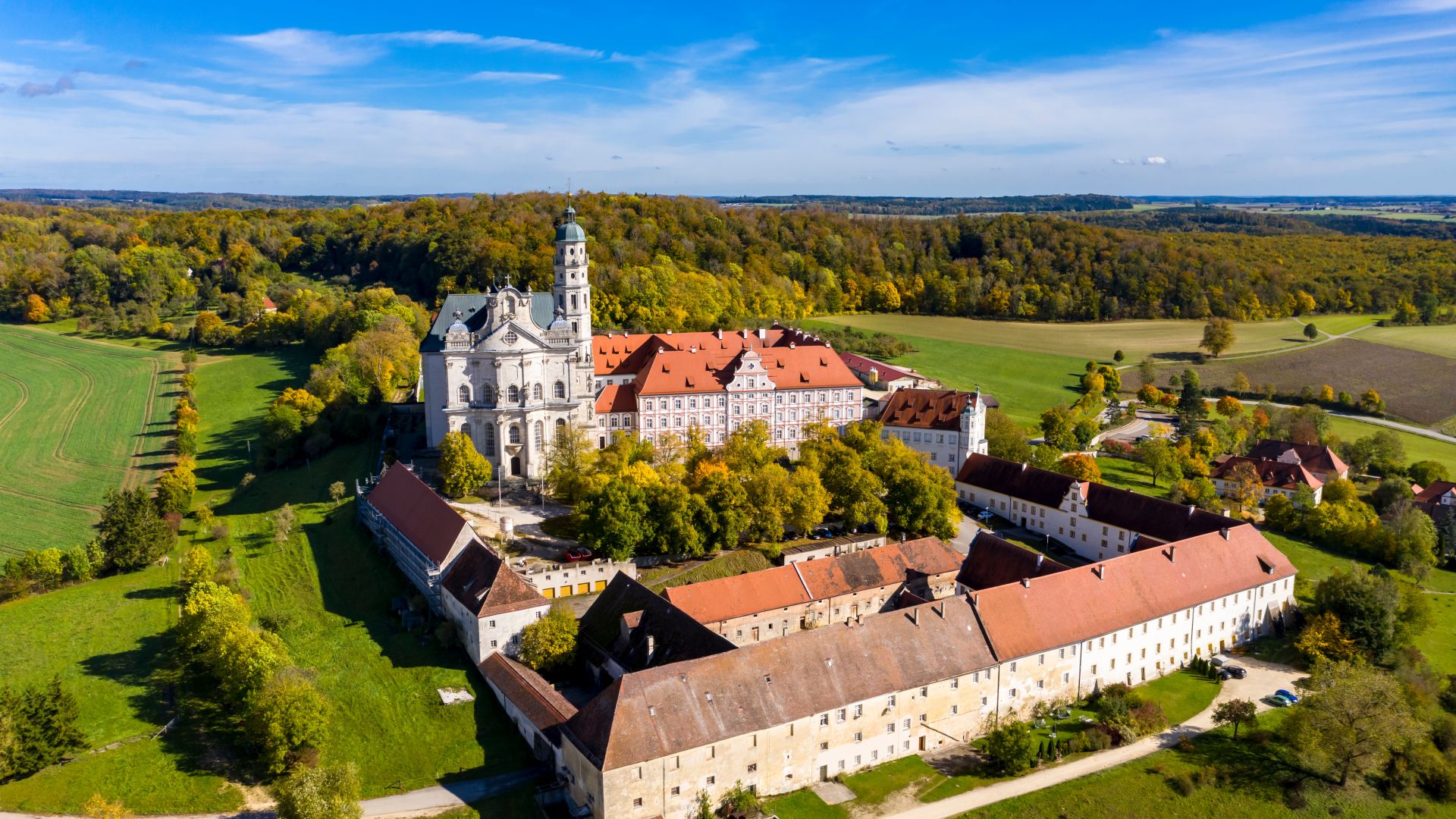 Neresheim: Aerial view of Neresheim Abbey Church
©Adobe Stock (Westend61)
Neresheim: Aerial view of Neresheim Abbey Church
©Adobe Stock (Westend61)
The gem of the Benedictine Abbey of Neresheim is the abbey church, flooded with light and decorated with dome frescoes, forming one of the most significant sacred buildings of the Late Baroque period. The abbey’s history dates back to the 11th century and it offers an abundance for believers, those looking for something more in life, and visitors interested in art. As well as international concerts in the abbey church, a monastery bookshop and a museum on the history of the monastery, hospitality is given high priority in the spirit of Saint Benedict. Just as in the past strangers looked to the monastery for a place to stay for the night, today the Neresheim conference centre is open to everyone. For anyone who wants to come to rest and recuperate - with wonderful views of the Swabian Alb - you’ve come to the right place. Courses and workshops provide useful instruction on mindfulness techniques such as meditation, qigong or tai chi. Those exploring the Franconian-Swabian section of the St. James pilgrimage route will also find monastic accommodation at Neresheim.
Meditation and pilgrimage
Archabbey of St. Martin at Beuron, Baden-Württemberg
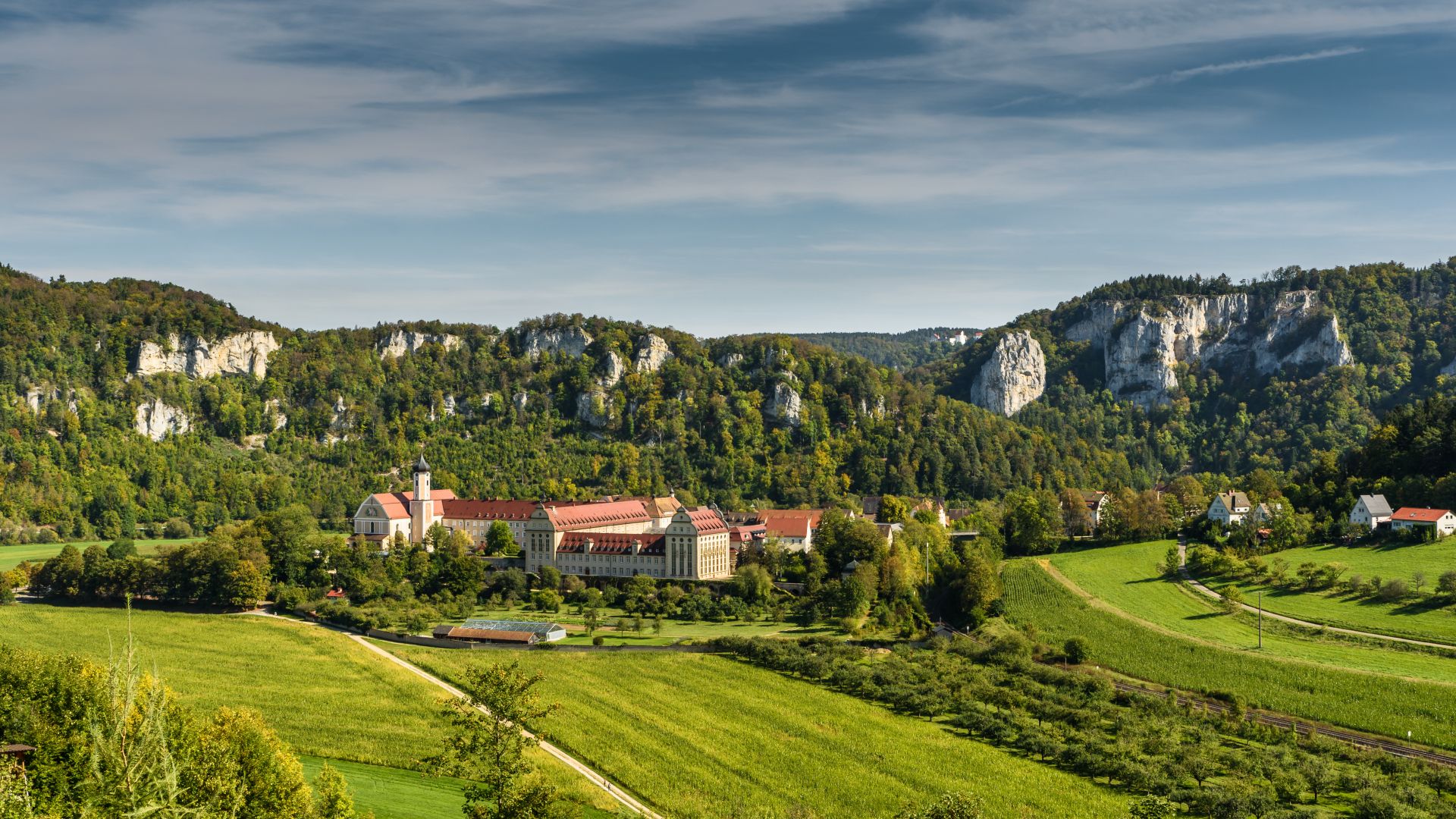 Beuron: Benedictine Archabbey of St. Martin, Beuron Monastery
©Adobe Stock (Conny Pokorny)
Beuron: Benedictine Archabbey of St. Martin, Beuron Monastery
©Adobe Stock (Conny Pokorny)
Strangers should be welcomed with open arms as if they were Christ Himself - that’s the motto of the Benedictine monks in the Beuron Archabbey. The monks host lectures, meditation days and seminars, and offer themselves as discussion partners to guests of the abbey. In an atmosphere of silence and contemplation, the focus is mainly on questions of faith and the meaning of life. Whether participating in workshops, guided tours or the liturgy of the monastic community: visitors are free to choose and organise their stay as they wish. All are invited to stay in the guest house with its house chapel and meditation room. As well as experiencing monastic life, trips into the spectacular nature of the Swabian Alb are also tempting. The Beuron Archabbey is located in the heart of the Upper Danube Nature Park, in a basin surrounded by rugged limestone cliffs. The hiking route called "Valley of the Monks", for example, is popular with monastery guests. It leads along the Danube river bends and with its wealth of animal and plant species makes it possible to experience a piece of "creation history". The archabbey is located on the Beuron section of the St. James pilgrimage route, also known as the “Via Beuronensis”.